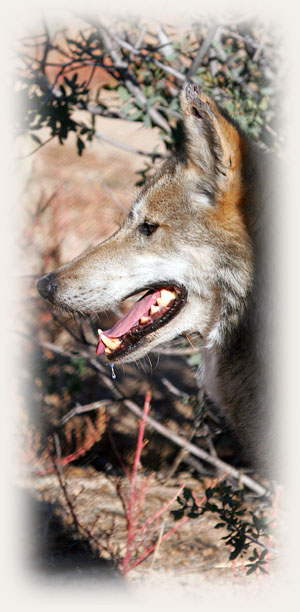 |
Studbooks? What are they anyway? |
|||
There are two important documents that are used as guidelines for the management of the Mexican gray wolf SSP. The first of these is the Mexican Wolf International Studbook. This studbook is a compilation of the vital records of the entire historic captive population of the Mexican gray wolf subspecies. Included are all the births, deaths, and transfers that have occurred in the history of the subspecies, as well as the family lineages. Each wolf is assigned it’s own individual studbook number by the studbook keeper. By utilizing the information contained in the studbook, the captive population can be managed in a scientific manner that allows both genetic and demographic goals for the preservation of the subspecies to be met. The studbook is maintained on a computer program known as SPARKS. With appropriate computer analysis, a studbook enables the species coordinator and management group to develop a Master Plan that contains sound breeding recommendations based on genetics, demographics, and the species biology. Historical Perspective - Population Lineages |
|||
Five wolves, (four males and one pregnant female) were captured from the wild to form a captive breeding program between 1977 and 1980 by Roy McBride in Durango and Chihuahua, Mexico. These five wolves were then transferred to the U.S. where three (one female and two males) became the founders of a certified captive breeding program for a species that was on the brink of extinction. Known as the McBride lineage, the population had grown to 107 animals by 1995. In July 1995, two additional lineages of captive Mexican wolves, the Ghost Ranch population in the United States and the Aragon population in Mexico City, were approved for addition to the SSP breeding program. The Ghost Ranch lineage is derived from two wolves taken from the wild in 1959 and 1961. The Aragon lineage is derived from two wolves originating at the Chapultepec Zoo in the mid 1970s. Although both lineages had been maintained in captivity since at least the 1960s, they were previously uncertified because of uncertainties about their origins. However, genetic investigations concluded that all three lineages were pure Canis lupus baileyi. Findings revealed that the McBride lineage had the lowest level of inbreeding and had retained the most founder alleles, while the Ghost Ranch lineage had a high level of inbreeding and the fewest founder alleles. The study also confirmed the McBride lineage to have only three founders versus the four previously assumed (one of the wild caught males was the offspring of the wild caught female). Findings from this research recommended that the three lineages be combined to increase the number of founders and to postpone any inbreeding depression. The addition of these two lineages added 4 new founders and 33 individuals (25 Ghost Ranch, 8 Aragon) to the total captive population. For more information regarding the three lineages of Mexican gray please see Return of El Lobo: A Recovery Program Coming of Age. |
 |
||